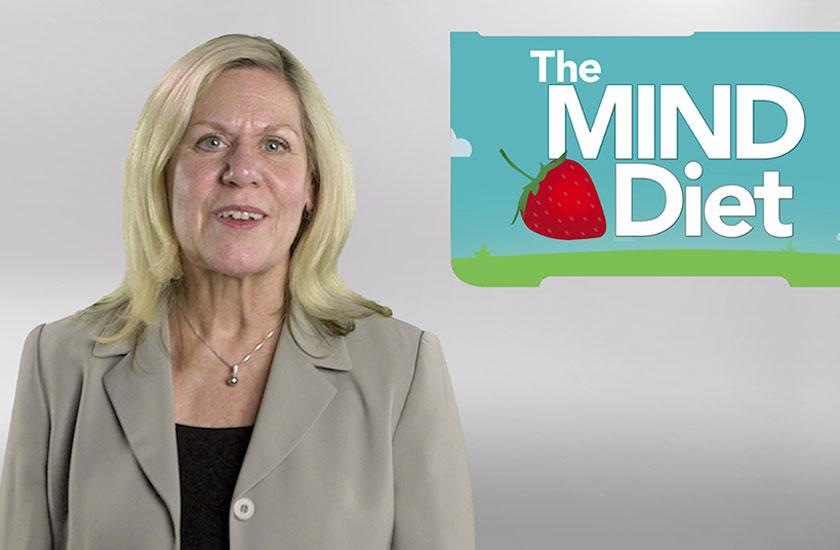For the fifth consecutive year, a diet created, studied and reported on by researchers at RUSH University Medical Center has been ranked among the top 10 diets in multiple categories by U.S. News & World Report in its annual “Best Diets” list. The MIND diet was tied for third for easiest diet to follow, fourth for best overall, fifth for best for healthy eating and seventh for best heart-healthy diets.
In all, the MIND diet was ranked in the following seven categories:
- Easiest Diets to Follow: No. 3 (tie)
- Best Diets for Healthy Eating: No. 4 (tie)
- Best Diets Overall: No. 5 (tie)
- Best Heart-Healthy Diets: No. 7 (tie)
- Best Diets for Diabetes: No. 11 (tie)
- Best Weight-Loss Diets: No. 27 (tie)
- Best Fast Weight-Loss Diets: No. 32 (tie)
Now in its 10th year, the annual “Best Diets” list provides facts about 35 chosen eating plans and ranks them on a range of levels, from their heart healthiness to their likelihood to help with weight loss.
To create the annual rankings, U.S. News editors and reporters explore potential additions to the list of diets and then seek information in medical journals, government reports and other resources to create in-depth diet profiles. Each profile explains how the diet works and whether its claims are substantiated, scrutinizes it for possible health risks, and assesses what it’s like to live on the diet.
Martha Clare Morris, ScD, a nutritional epidemiologist, and her colleagues at RUSH and Harvard University developed the MIND diet based on research showing a correlation linking certain foods and nutrients to effects on brain function. The MIND diet is a hybrid of the Mediterranean and DASH (Dietary Approaches to Stop Hypertension) diets. Both have been found to reduce the risk of cardiovascular conditions, such as hypertension, diabetes, heart attack and stroke.
In 2017, researchers at RUSH and Harvard School of Public Health began a three-year study to compare of the MIND diet and a second diet intervention to see what effects they have on the development of dementia and Alzheimer’s disease. Each of the two research sites enrolled 302 people who are overweight and have suboptimal diets, which make them vulnerable to Alzheimer’s disease.
“With this study, we hope to obtain further confirmation of the MIND diet’s effectiveness in reducing the risk of developing dementia, and see how much these results differ from that of another reduced calorie diet,” Morris said.
Best diet for healthy eating
The MIND diet emphasizes healthy food groups while restricting foods. The healthy food group includes two or more daily servings of vegetables, of which one serving is a leafy green; three servings per day of whole grains; a serving of beans three times weekly; one ounce of nuts/nut butters and a half cup of berries five days per week; two tablespoons of extra virgin olive oil a day; poultry twice weekly, and at least one fish meal weekly.
The unhealthy food limitations include no more than one teaspoon a day of butter, eating less than five servings a week of sweets and pastries, less than four servings a week of red meat, no more than two ounces of whole-fat cheese weekly, and no more than one meal of fried foods per week.
One advantage of the MIND diet is that benefits have been shown for people following the diet in moderation – meaning one does not have to achieve the target goal for each food in order to gain brain health benefits. For example, a person who is having difficulty limiting intake of red meat to less than four servings per week could still be considered a healthy eater, provided they were reaching the goal of at least one serving of leafy green vegetables each day.
Easiest diet to follow
“MIND is about changing your lifestyle, not following a fad diet,” said Jennifer Ventrelle, MS, RD, lead dietitian for the MIND Diet Intervention to Prevent Alzheimer’s Disease at RUSH. “Because it is a set of guidelines instead of strict rules, the MIND diet allows for special days.”
Dishes such as a spinach salad with walnuts, dried cranberries and a balsamic and olive oil dressing use common foods that are easy to obtain and fit the diet’s specifications. A shrimp cocktail can fulfill the weekly seafood requirement.
“Because the MIND diet calls for daily servings of vegetables, a person can make a plate with salad and veggies first,” Ventrelle added. “Even during celebrations or special occasions, a person can fill up on the healthier options before eating other foods. This can be helpful with controlling portions of more indulgent foods, since it takes 20 minutes for the brain to realize you’ve eaten.”
In addition, the MIND diet’s focus on berries as the best fruit and consumption of just one serving of fish/seafood per week is in contrast to the Mediterranean and DASH diets, which specify three to four daily servings of fruit, and the Mediterranean diet’s six weekly servings of fish.
Best diet overall and heart-healthy diets
Not only does the MIND diet seem to provide long-term protection against cognitive decline and Alzheimer’s disease – it also promotes overall health, including cardiovascular benefits.
“What a person eats can have a protective effect on current and long-term health in many different ways,” Morris observed. “The MIND diet encourages the consumption of foods that have been demonstrated to protect against a number of different health conditions, not just dementia, and also discourages foods that can lead to poor health.”

